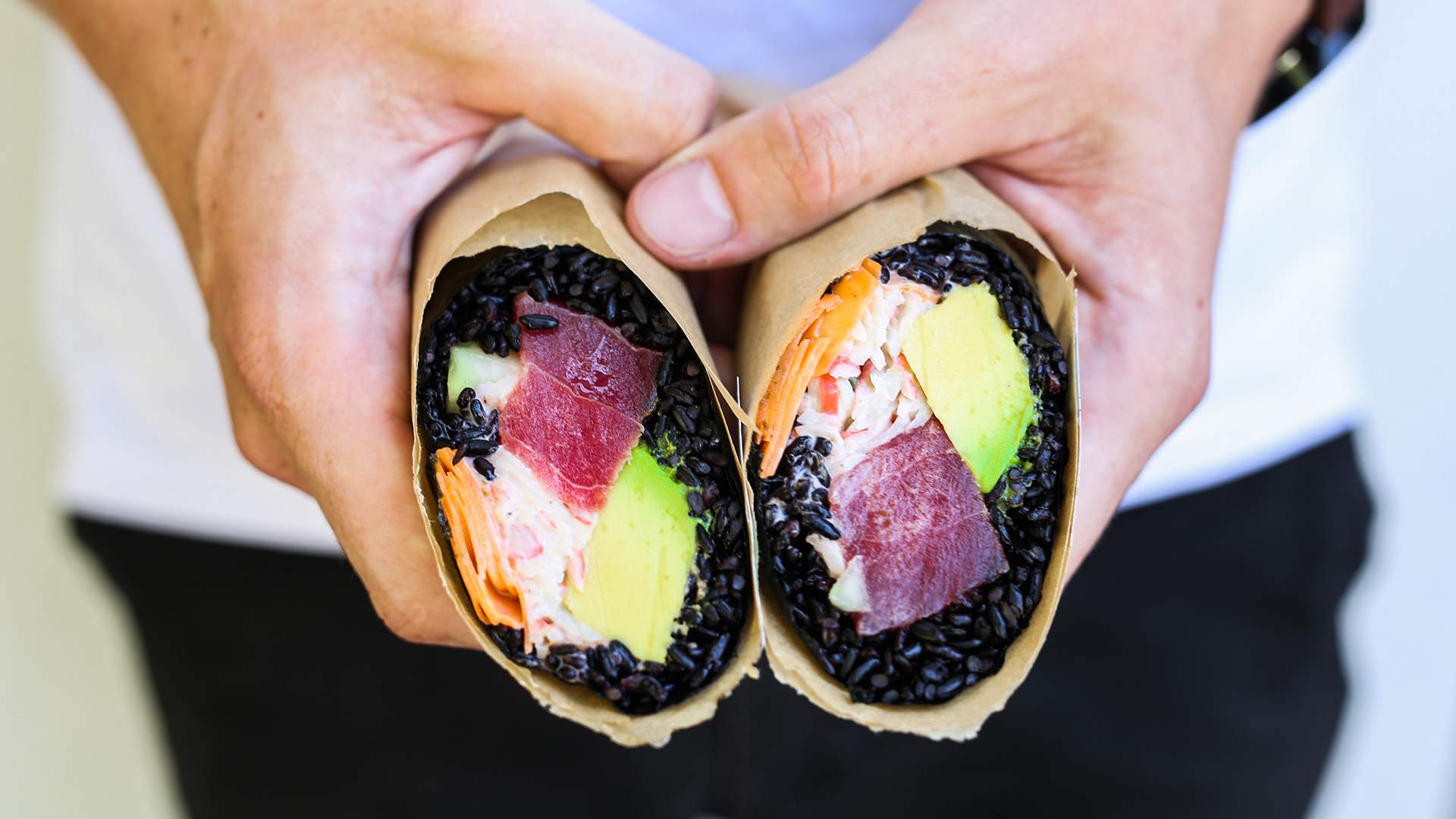In the ever-evolving world of culinary creativity, the fusion of diverse flavors and textures has given rise to innovative dishes that capture the imagination and taste buds. One such culinary marvel that has taken the food scene by storm is the Sushi Burrito. Combining the artistry of sushi with the convenience of a burrito, this delectable creation has sparked a Sushi Burrito Bonanza. Join us as we unravel the origins of this fusion delight, explore its unique characteristics, and delve into the emerging trend that’s making it a go-to choice for food enthusiasts on the move.
Crafting the Sushi Burrito
Sushi Meets Burrito
The Sushi Burrito, at its core, is a marriage of two beloved cuisines – Japanese and Mexican. Imagine the precision of sushi preparation paired with the handheld convenience of a burrito. Instead of the traditional seaweed wrapper, a sheet of soy paper or a large piece of seaweed is used to encase a flavorful combination of sushi rice, fresh vegetables, proteins, and sauces.
Customizable Creations
One of the defining features of the Sushi Burrito is its customizable nature. Diners have the freedom to choose their preferred ingredients, allowing for a personalized flavor profile. From traditional sushi elements like raw fish and avocado to unconventional choices like spicy mayo, mango, or even quinoa, the possibilities are as diverse as the tastes of those crafting and consuming these fusion rolls.
The Sushi Burrito Trend: Fusion on the Rise
The Sushi Burrito Trend represents a contemporary culinary movement, fusing traditional Japanese sushi techniques with the modern desire for on-the-go convenience and diverse flavor experiences.
On-the-Go Gourmet
One notable aspect of the Sushi Burrito Trend is its appeal to individuals seeking gourmet flavors in a convenient, portable format. The hand-held nature of the Sushi Burrito makes it an ideal option for those looking to enjoy a high-quality, restaurant-worthy meal without the need for traditional table settings.
Fusion Fillings
Innovation within the Sushi Burrito trend extends to the fillings. Chefs and culinary enthusiasts are pushing the boundaries of traditional sushi ingredients, introducing unique combinations that cater to a wide range of tastes. Teriyaki chicken, spicy tuna, tempura shrimp, and diverse vegetable options are just a few examples of the fusion fillings that contribute to the Sushi Burrito Bonanza.
Food Truck Phenomenon
The Sushi Burrito Trend has found a natural home in the food truck scene. Food trucks, known for their ability to offer diverse and creative dishes on the go, have embraced the Sushi Burrito Bonanza. This trend allows for accessibility to a broad audience, introducing them to the delightful fusion of flavors wrapped in a convenient package.
Where to Experience the Sushi Burrito Bonanza
For those eager to indulge in the Sushi Burrito Bonanza, various culinary destinations and services provide opportunities to savor the diverse world of this fusion creation.
Sushi Burrito Restaurants
Dedicated Sushi Burrito restaurants are popping up in urban centers and culinary hotspots. These establishments often feature an extensive menu of customizable options, allowing diners to craft their ideal Sushi Burrito experience.
Food Truck Festivals
Food truck festivals and events are excellent venues for discovering Sushi Burrito offerings. The casual and vibrant atmosphere of these gatherings provides an ideal setting to sample different interpretations of the fusion roll from various vendors.
DIY Sushi Burrito Kits
In the age of DIY dining experiences, some culinary services offer Sushi Burrito kits for home preparation. These kits typically include pre-prepared ingredients and clear instructions, allowing individuals to enjoy the Sushi Burrito Bonanza from the comfort of their own kitchens.
Embracing the Sushi Burrito Bonanza: A Fusion Feast
In conclusion, the Sushi Burrito Bonanza invites us on a fusion feast where the traditions of sushi meet the convenience of a burrito. Whether relishing a classic combination or exploring inventive fillings at a food truck festival, the Sushi Burrito Trend celebrates the marriage of diverse culinary influences in a portable and delicious package. So, embrace the fusion roll, explore its customizable options, and let each bite be a celebration of the Sushi Burrito’s journey from inventive fusion creation to a bonanza of flavors on the go.…


